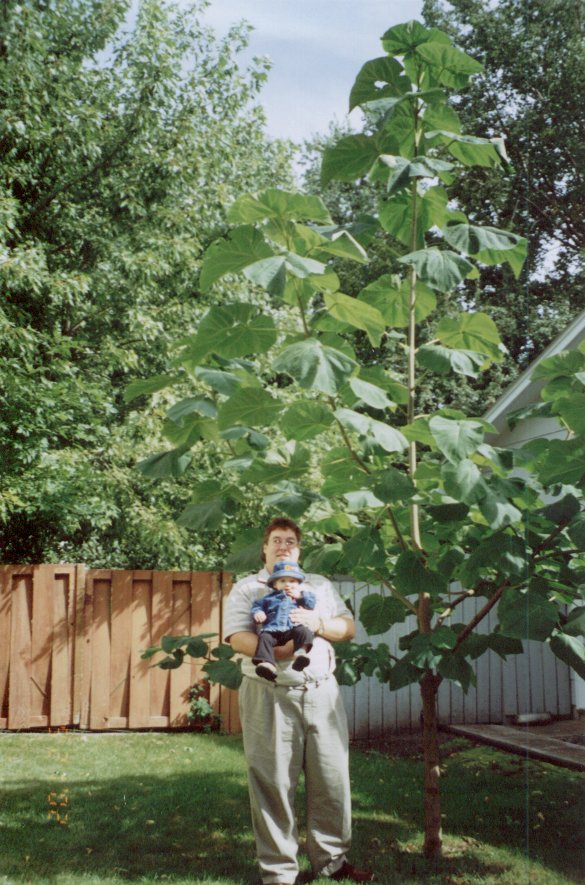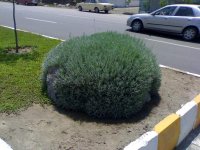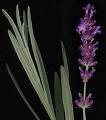You are using an out of date browser. It may not display this or other websites correctly.
You should upgrade or use an alternative browser.
You should upgrade or use an alternative browser.
مسابقه *** هركي گفت اين چه گياهيه ...؟
- شروع کننده موضوع گلابتون
- تاریخ شروع
سلام
اسم درخت پالونیا
دقیقتر نمیزارین دوست من ؟
Paulownia kawakamii (Dragon Tree, Empress Tree
Paulownia kawakamii (Dragon Tree, Empress Tree





Paulownia kawakamii (Dragon Tree, Empress Tree
Common Names in English:
Dragon Tree, Empress Tree
Description
Family ScrophulariaceaeDragon Tree, Empress Tree
Description
Herbs, sometimes shrubs , rarely trees ; mostly autotrophic, less often hemiparasitic or parasitic. Stipules absent. Leaves alternate, opposite, whorled , or basally opposite and apically alternate, simple or sometimes pinnately dissected . Inflorescences racemes , spikes, or thyrsoid panicles, determinate or indeterminate, or flowers solitary. Flowers perfect , usually zygomorphic, rarely actinomorphic . Calyx often persistent , (2-) 4- or 5-lobed or -parted, variously connate . Corolla sympetalous ; limb (3 or) 4- or 5-lobed, often 2-lipped. Stamens mostly 4, didynamous , sometimes 1 or 2 staminodes present, less often 2 or 5 stamens; anther locules 1 or 2, equal or subequal , free or confluent . Nectary often present at base of ovary, ringlike, cupular, or reduced to a gland . Ovary superior, 2-loculed, rarely apically 1-loculed; ovules numerous , rarely 2 per locule, on axile placentas, anatropous or hemitropous . Style simple; stigma capitate, 2-lobed, or 2-lamellate. Fruit a capsule, septicidal , loculicidal, or septifragal, sometimes opening by pores or irregularly dehiscent , rarely a berry. Seeds minute or rarely conspicuous , sometimes winged ; testa often reticulate ; hilum lateral or ventral ; endosperm fleshy or absent; embryo straight or curved .
About 220 genera and 4500 species: cosmopolitan ; 61 genera (seven endemic) and 681 species (415 endemic) throughout China but with a greater concentration in SW China.1
Genus PaulowniaAbout 220 genera and 4500 species: cosmopolitan ; 61 genera (seven endemic) and 681 species (415 endemic) throughout China but with a greater concentration in SW China.1
Trees , deciduous, evergreen in tropics. Bark smooth with conspicuous lenticels when young, longitudinally splitting with age. Branches opposite, without terminal buds. Leaves opposite, occasionally 3 in a whorl; petiole long; leaf blade entire or shallowly 3-5-lobed, margin undulate and often serrate when young. Inflorescences a large pyramidal to cylindric thyrse . Cymes (1-) 3-5(-8) -flowered, pedunculate or not. Calyx campanulate or obconical , hairy ; lobes 5, subequal , upper 1 enlarged. Corolla purple or white, funnelform-campanulate to tubular-funnelform; tube base constricted and slightly curved ; limb 2-lipped; lower lip elongated and 3-lobed; upper lip yellow, 2-lobed. Stamens 4, didynamous ; filaments included , twisted near base; anthers divergent. Ovary 2-loculed. Style nearly as long as stamens. Capsule loculicidal, 2-valved or incompletely 4-valved; pericarp thin or thick and woody. Seeds small, numerous , membranous winged ; endosperm sparse.
Seven species: mostly in China with one species extending to Laos and Vietnam; six species in China.
Because of the extensive cultivation of most species, it is often difficult to determine the precise wild distribution.2
Physical DescriptionSeven species: mostly in China with one species extending to Laos and Vietnam; six species in China.
Because of the extensive cultivation of most species, it is often difficult to determine the precise wild distribution.2
Habit: Deciduous.
Flowers: Bloom Period: March. • Flower Color: lavender, violet
Size/Age/GrowthFlowers: Bloom Period: March. • Flower Color: lavender, violet
Size: 30-40' tall.
HabitatEcology: Mixed evergreen forest . (Ref. 85466
Biology
Growth
Culture: Space 15-20' apart.
Soil: Minimum pH: 5.6 • Maximum pH: 6.5
Sunlight: Sun Exposure: Full Sun .
Moisture: Drought Tolerance: High
Temperature: Cold Hardiness: 6a, 6b, 7a, 7b, 8a, 8b, 9a, 9b, 10a, 10b. (map


Biology
Growth
Culture: Space 15-20' apart.
Soil: Minimum pH: 5.6 • Maximum pH: 6.5
Sunlight: Sun Exposure: Full Sun .
Moisture: Drought Tolerance: High
Temperature: Cold Hardiness: 6a, 6b, 7a, 7b, 8a, 8b, 9a, 9b, 10a, 10b. (map







اعتراض
اعتراض
من به پاسخی که دادم اعتراض دارم و اصلن مورد قبول خودم نیست
درسته که کاملن جواب صحیح و قانع کنندست، ولی من برنده نیستم
از همگی عذر میخوام، شرمندم واقعن
ولی تو فرومی که در مورد این گیاه هم نوشته، تو نظر سنجیاش برین چیزای جالبی نوشته، واسه همین خندم گرفته بود
خیلی باحال بودن
باز معذرت میخوام
منتظرم تا مامان گلاب بیاد و در مورد جواب و اعتراضم پاسخ بدن
من واقعن رو جوابی که دادم اعتراض دارم و الان و همون موقع که پاسخ رو دادم و داشتم میزاشتمش احساس شرم کردم، ولی دلایلی داشت، که بهتر دیدم من جواب این گیاه رو بزارم و این من باشم که مورد اعتراض واقع بشم
در کل من اعتراض دارم رو جوابم و مورد قبول نیست جوابم !
با تشکر
جوجوی متفکر
اعتراض
من به پاسخی که دادم اعتراض دارم و اصلن مورد قبول خودم نیست
درسته که کاملن جواب صحیح و قانع کنندست، ولی من برنده نیستم
از همگی عذر میخوام، شرمندم واقعن
ولی تو فرومی که در مورد این گیاه هم نوشته، تو نظر سنجیاش برین چیزای جالبی نوشته، واسه همین خندم گرفته بود
خیلی باحال بودن
باز معذرت میخوام
منتظرم تا مامان گلاب بیاد و در مورد جواب و اعتراضم پاسخ بدن
من واقعن رو جوابی که دادم اعتراض دارم و الان و همون موقع که پاسخ رو دادم و داشتم میزاشتمش احساس شرم کردم، ولی دلایلی داشت، که بهتر دیدم من جواب این گیاه رو بزارم و این من باشم که مورد اعتراض واقع بشم
در کل من اعتراض دارم رو جوابم و مورد قبول نیست جوابم !
با تشکر
جوجوی متفکر

golbaghbabak
عضو جدید
سلام بر دوستان.من عذر میخوام از دوستانی که شاید از من مکدر شدند،چند نظر داشتم اولا که من اومدم تا به اطلاعاتم اضافه کنم نه اینکه اونو به رخ بکشم،ثانیا من عکس را اشتبته گرفته بودم،ثالثا اگه واقعا میخوایم دانسته هامون افزایش کنه از گیاهان بومی خودمون استفاده کنیم تا بتونیم از اون استفاده کنیم .اینهمه درختان در پوشش گیاهی فضای سبز شهرهای مختلف..
سکوت سرشار از سخنان ناگفته است،از حرکات ناکرده،اعتراف به عشقهای نهان و دلتنگی های بر زبان نیامده...
سکوت سرشار از سخنان ناگفته است،از حرکات ناکرده،اعتراف به عشقهای نهان و دلتنگی های بر زبان نیامده...
گلابتون
مدیر بازنشسته
بابك جان اين چه حرفي مگه كسي به شما تعرضي داشته گلم...؟؟؟؟؟؟؟
همه ما اينجا ميام كه چيزي به اندوخته هاي خودمون اضافه كنيم هيچكس هم هيچ ادعايي نداره مهربونم
و اگه منظورتون گياهيه كه من قرار دادم خدمت شماو ديگر دوستان عرض كنم كه هم اكنون 5 هزار اصله نهال اين درخت در جنگلهاي گرگان به عمل آمده و آماده برداشت براي مصارف صنعتي است ... گرچه من براي راهنمايي دوستان يه راهنمايي كوچولو روي عكس قراردادم كه ميشد زيركانه از آن براي دست يابي به پاسخ اقدام نمود.... و اين هم هيچ اشكالي نداره ... منظور ما ياد گيري است حالا به هر طريق ممكن ...
خودتون رو از ما بدونيد و شاد باشيد ما به داشتن افرادي چون شما و دانش شما افتخار ميكنيم عزيز
گلاب خاتون ناظم

همه ما اينجا ميام كه چيزي به اندوخته هاي خودمون اضافه كنيم هيچكس هم هيچ ادعايي نداره مهربونم

و اگه منظورتون گياهيه كه من قرار دادم خدمت شماو ديگر دوستان عرض كنم كه هم اكنون 5 هزار اصله نهال اين درخت در جنگلهاي گرگان به عمل آمده و آماده برداشت براي مصارف صنعتي است ... گرچه من براي راهنمايي دوستان يه راهنمايي كوچولو روي عكس قراردادم كه ميشد زيركانه از آن براي دست يابي به پاسخ اقدام نمود.... و اين هم هيچ اشكالي نداره ... منظور ما ياد گيري است حالا به هر طريق ممكن ...

خودتون رو از ما بدونيد و شاد باشيد ما به داشتن افرادي چون شما و دانش شما افتخار ميكنيم عزيز

گلاب خاتون ناظم
golbaghbabak
عضو جدید
سلام دوست من.خب زیبا بود ولی باید از کاکتوسها خارج از حیطه بیابانی خود داری کنید ،به نظر منسلام
نظر شما راجع به این کار چیه .کار خودمه

golbaghbabak
عضو جدید
از لطف شما متشکرم.البته نظر من در مورد گیاهان آنهایی بود که کاربرد زیاد دارند ،بابك جان اين چه حرفي مگه كسي به شما تعرضي داشته گلم...؟؟؟؟؟؟؟
همه ما اينجا ميام كه چيزي به اندوخته هاي خودمون اضافه كنيم هيچكس هم هيچ ادعايي نداره مهربونم
و اگه منظورتون گياهيه كه من قرار دادم خدمت شماو ديگر دوستان عرض كنم كه هم اكنون 5 هزار اصله نهال اين درخت در جنگلهاي گرگان به عمل آمده و آماده برداشت براي مصارف صنعتي است ... گرچه من براي راهنمايي دوستان يه راهنمايي كوچولو روي عكس قراردادم كه ميشد زيركانه از آن براي دست يابي به پاسخ اقدام نمود.... و اين هم هيچ اشكالي نداره ... منظور ما ياد گيري است حالا به هر طريق ممكن ...
خودتون رو از ما بدونيد و شاد باشيد ما به داشتن افرادي چون شما و دانش شما افتخار ميكنيم عزيز
گلاب خاتون ناظم
سلام بر دوستان.من عذر میخوام از دوستانی که شاید از من مکدر شدند،چند نظر داشتم اولا که من اومدم تا به اطلاعاتم اضافه کنم نه اینکه اونو به رخ بکشم،ثانیا من عکس را اشتبته گرفته بودم،ثالثا اگه واقعا میخوایم دانسته هامون افزایش کنه از گیاهان بومی خودمون استفاده کنیم تا بتونیم از اون استفاده کنیم .اینهمه درختان در پوشش گیاهی فضای سبز شهرهای مختلف..
سکوت سرشار از سخنان ناگفته است،از حرکات ناکرده،اعتراف به عشقهای نهان و دلتنگی های بر زبان نیامده...
خدای نکرده چیزی شده ؟ نکنه ازمون دلگیر باشین؟ ما حالا حالاها با شما کار داریم و به وجودتون در تالار افتخار میکنیم . خواهش میکنم اگه حرفی هست بزارید به حساب ادبیات جوانی
ترجمهای اندک از درخت پائولونبا
ترجمهای اندک از درخت پائولونبا
اسامی رایج این درخت: درخت اژدها ( میوه این درخت در صفحه 20 همین تاپیک گذاشته شده ) - درخت شاهزاده، امپراطور
تشریح:
خانوادهی scrophulariaveae
این قسمت، فقط مدل برگ و ... رو توضیح داده بود، زیاد چیز جالبی واسه ترجمه نبود، منم نزاشتمش
GENUS PAULOWNIA
درختانی برگریز و در نواحی گرمسیر همیشه سرسبز، در جوانی دارای پوستی صاف با منفذهای زیبا و آشکار که با گذشت زمان بینشون شکاف ایجاد میشه، دارای شاخهها متفاوت، بدون جوانه، برگهایی زیبا که گاهن 3 عدد رو میشه توی یک حلقه و مکان مشاهده کرد، دارای ساق برگهای طویل، و جوانههای تیغ مانند در عمقی کم و در قطعههای 3 تا 5 جزئیة .... (تا همینجاش کافیه دیگه )
خصوصیات فیزیکی
نوع: برگریز
گل:در ماه مارچ گل میده و دارای شکوفههای بسیار زیبا
رنگ گل: بنفش کمرنگ، بنفش
اندازه: 30 تا 40 فوت بلندی
بوم شناسی: جنگلهای همیشه سبز
دیگه ببخشین کامل نتونستم ترجمه کنم، خیلی خیلی تخصصی بود، زیادم بود، حمله هم نبودن، همش کلمه کلمه، بازم معذرت، فکر میکنم قسمتهای مورد نیازش رو معنی کردم
ترجمهای اندک از درخت پائولونبا
اسامی رایج این درخت: درخت اژدها ( میوه این درخت در صفحه 20 همین تاپیک گذاشته شده ) - درخت شاهزاده، امپراطور
تشریح:
خانوادهی scrophulariaveae
این قسمت، فقط مدل برگ و ... رو توضیح داده بود، زیاد چیز جالبی واسه ترجمه نبود، منم نزاشتمش
GENUS PAULOWNIA
درختانی برگریز و در نواحی گرمسیر همیشه سرسبز، در جوانی دارای پوستی صاف با منفذهای زیبا و آشکار که با گذشت زمان بینشون شکاف ایجاد میشه، دارای شاخهها متفاوت، بدون جوانه، برگهایی زیبا که گاهن 3 عدد رو میشه توی یک حلقه و مکان مشاهده کرد، دارای ساق برگهای طویل، و جوانههای تیغ مانند در عمقی کم و در قطعههای 3 تا 5 جزئیة .... (تا همینجاش کافیه دیگه )
خصوصیات فیزیکی
نوع: برگریز
گل:در ماه مارچ گل میده و دارای شکوفههای بسیار زیبا
رنگ گل: بنفش کمرنگ، بنفش
اندازه: 30 تا 40 فوت بلندی
بوم شناسی: جنگلهای همیشه سبز
دیگه ببخشین کامل نتونستم ترجمه کنم، خیلی خیلی تخصصی بود، زیادم بود، حمله هم نبودن، همش کلمه کلمه، بازم معذرت، فکر میکنم قسمتهای مورد نیازش رو معنی کردم
کاکتوس
کاربر بیش فعال
[
ATTACH]5442[/ATTACH]
سلام .با اجزه دوستان این تصویر را من قرار میدم
سلام
این درختچه زیبا اسپیره نام دارد
سلام بچه ها خوبین. شرمندم این حرفم رو میزنم ولی خلاف مقرراتع تاپیکه این عکس. ما با هم قرار گزاشتیم که برای جوابگویی به هر سوال تصویری 48 ساعت منتظر بمونیم و بعد از این مهلت کسی که عکس رو گزاشته میاد و میگه که جواب درست چی بوده . بعدش بر عهده ی گلابتونه که مشخص کنه عکس بعدی رو کی بزاره . هنوز عکس قبلی رو پاسخ ندادیم و نباید عکس جدیدی به نمایش گزاشته بشه. بازم من معذرت میخواهم که اینو گفتم ولی یه قرارداد داخلی بین بچه ها گزاشته شده و همه سعیمون بر اینه که رعایتش کنیم.ممنون میشم پاسخگویی به این عکس رو به بعد واگذار کنیم.

گلابتون
مدیر بازنشسته
ممنون از تذكرتون گلرخ خانم محبت فرموديد...
دوستان از پاسخگويي به اين عكس آخر لطفا خودداري فرموده تا به نوبت خودشون ارائه شود.
با عرض معذرت از دوست عزيزمون بابك جان ...
در ضمن گلرخ خانم منتظر واژه علميتون هم هستيم. لازم به ذكر هست كه در مدتي كه بنده مسافرت بودم گويا نوبت عكس هم با شما بوده كه ظاهرا شما هم تشريف نداشتيد ... پس نوبت عكس هم با خود شماست ... بفرماييد خانمم
پاسخ عكس .... درخت پالونيا هست... كه دوستان در چند مورد جواب صحيح رو فرمودند....البته اولين نفر دوست عزيزمون s.hsdi بودند ... و بعد از ايشون جوجو جان كه جواب و توضيحات كامل رو قرار دادند...
پس برنده اين دوره دوست خوبمون s.hsdi هستند كه توي ليست قرار ميگيرن ...
تبريك ميگم دوست عزيز موفق و مويد باشيد گلم .
گلاب خانم ناظم
دوستان از پاسخگويي به اين عكس آخر لطفا خودداري فرموده تا به نوبت خودشون ارائه شود.
با عرض معذرت از دوست عزيزمون بابك جان ...
در ضمن گلرخ خانم منتظر واژه علميتون هم هستيم. لازم به ذكر هست كه در مدتي كه بنده مسافرت بودم گويا نوبت عكس هم با شما بوده كه ظاهرا شما هم تشريف نداشتيد ... پس نوبت عكس هم با خود شماست ... بفرماييد خانمم
پاسخ عكس .... درخت پالونيا هست... كه دوستان در چند مورد جواب صحيح رو فرمودند....البته اولين نفر دوست عزيزمون s.hsdi بودند ... و بعد از ايشون جوجو جان كه جواب و توضيحات كامل رو قرار دادند...
پس برنده اين دوره دوست خوبمون s.hsdi هستند كه توي ليست قرار ميگيرن ...
تبريك ميگم دوست عزيز موفق و مويد باشيد گلم .
گلاب خانم ناظم
آخرین ویرایش:
کاکتوس
کاربر بیش فعال
خوب مثل اینکه نوبت من شده واژه علمی بزارم. آسون میگم:
بگید این چی میشه: پداژه
برای عکس هم من فعلاً سرماخوردگی بدی دارم و حال سرچ کردن ندارم .گلاب جون لطف میکنی نوبت من رو برام محفوظ نگه داری و کس دیگه ای زحمت عکس رو برای این 48 ساعت بکشه ممنونم..
سلام دوستان
پدازه.قسمت متورم شده پایین یک محور ساقه است که توسط برگهای خشک فلس مانند محصور شده مانند گلایل وزعفران
گلابتون
مدیر بازنشسته
براي گلرخ دوست عزيزمون دعا ميكنيم كه ايشالا هرچه زودتر حالشون بهتر بشه و به جمعمون بپيوندند ... شبت خوش عزيز
خوب با شرايط پيش آمده ...استثنا با شرايط فعلي برنامه رو دنبال ميكنيم:
الان دو تا عكس يكي از دوست عزيزمون نسيم خرداد رو فعال داريم و يكي هم از دوست گراميمون بابك جان ... از دوستان درخواست ميكنم كه به هر دو عكس فعال پاسخ بدن ... اينطوري نظم تاپيك رو هم حفظ ميكنيم ...
پس شد يكي عكس نسيم جان و يكي هم عكس بابك جان ....از هر دو دوست عزيزمون درخواست ميكنم كه بعد از پست من عكسهاشون رو مجدد قرار بدن تا دوستان بهتر فرصت بررسي داشته باشن .
در خصوص واژه علمي هم كه شد پداژه ....
گلابتون ناظم
خوب با شرايط پيش آمده ...استثنا با شرايط فعلي برنامه رو دنبال ميكنيم:
الان دو تا عكس يكي از دوست عزيزمون نسيم خرداد رو فعال داريم و يكي هم از دوست گراميمون بابك جان ... از دوستان درخواست ميكنم كه به هر دو عكس فعال پاسخ بدن ... اينطوري نظم تاپيك رو هم حفظ ميكنيم ...
پس شد يكي عكس نسيم جان و يكي هم عكس بابك جان ....از هر دو دوست عزيزمون درخواست ميكنم كه بعد از پست من عكسهاشون رو مجدد قرار بدن تا دوستان بهتر فرصت بررسي داشته باشن .
در خصوص واژه علمي هم كه شد پداژه ....
گلابتون ناظم
پداژه قسمتهای متورمی هستند در گیاهانی مثل زعفران که ازطریق این پداژه ها گیاهان تکثیر میشوند که هر چه این پداژه ها درشت تر باشد باعث گلدهی بیشتر میشود ونیز تولید این پداژه ها بستگی به فواصل کاشت ونحوه ی آبیاری و دور آبیاری نیز دارد
کاکتوس
کاربر بیش فعال
سلام به همگی خوشحالم که نوبت به من رسید چشم الان میفرستم
لاواندا( اسطوخودس)
کاکتوس
کاربر بیش فعال
میتونم بپرسم بر اساس چه چیز اینو گفتین
اسم گیاه لاوندا میباشه. گیاه دارویی ودرفضای سبز کاربرد داره به پیوست شکل گیاه رو که سه سال قبل کاشتم میفرستم
پیوست ها
گلابتون
مدیر بازنشسته
دوستان لطفا از اسپم زدن در اين تاپيك خود داري بفرماييد .... متشكرم..
در بخش گفتگوي اعضاي تالار كشاورزي منتظر شنيدن صحبتهاي قشنگتون هستيم
نسيم جان كمي هم شباهت به پياز كوهي داره .... اگه عكس بزرگتري داريد برامون بزاريد ممنون ميشم گلم....
ببين اين عكسي از پياز كوهيه

و اين هم عكسي از لاواندا

خوب ببين خودت ... شايد من اشتباه ميكنم .
گلاب خانم ناظم
در بخش گفتگوي اعضاي تالار كشاورزي منتظر شنيدن صحبتهاي قشنگتون هستيم
نسيم جان كمي هم شباهت به پياز كوهي داره .... اگه عكس بزرگتري داريد برامون بزاريد ممنون ميشم گلم....
ببين اين عكسي از پياز كوهيه

و اين هم عكسي از لاواندا

خوب ببين خودت ... شايد من اشتباه ميكنم .
گلاب خانم ناظم
Similar threads
| Thread starter | عنوان | تالار | پاسخ ها | تاریخ |
|---|---|---|---|---|
|
|
مسابقه *** نحوه تکثیر این گیاه چیه؟ | باغبانی | 321 | |
|
|
مسابقه *** من می پرسم... تو بپرس...! | باغبانی | 437 | |
| آ | مسابقه *** كي ميتونه بگه اين وسيله باغباني اسمش چيه ؟ | باغبانی | 603 | |
| آ | مسابقه *** كي ميتونه اين برگ هارو بشناسه؟ | باغبانی | 1543 | |
|
|
مسابقه *** هر کی تونست یه عکس خوب از گیاه پیدا کنه | باغبانی | 1717 |









